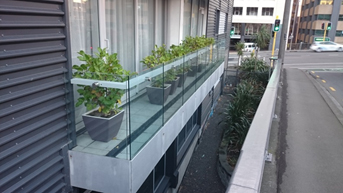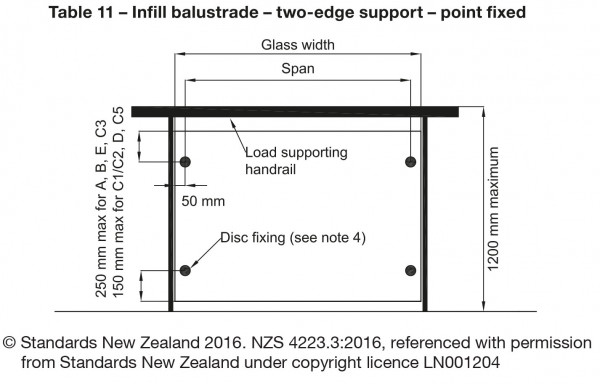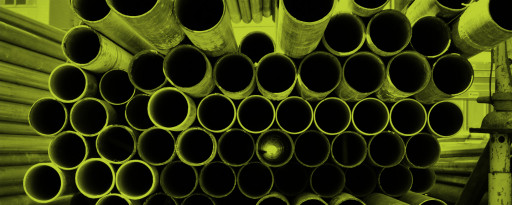Overview of recent glass barrier changes
Codewords 73: July 2016

Designers need to be aware of an amendment to glass barrier requirements in Acceptable Solution B1/AS1. It now cites the glass barrier requirements in section 22 of NZS 4223.3:2016 Glazing in buildings – Part 3: ‘Human impact safety requirements’.

Designers should note a recent amendment to glass barrier requirements, intended to create a ‘second line of defence’.
The amendment means that Acceptable Solution B1/AS1 now cites the glass barrier requirements in section 22 of NZS 4223.3:2016 Glazing in buildings – Part 3: 'Human impact safety requirements’.
The 1999 version of Part 3 gave thicknesses for glass in barriers but no details of the construction of the whole barrier.
The changes came into effect on 1 June 2016 by way of Amendment 13 to B1/AS1.
The figure below shows an example barrier from NZS4223.3:2016.

This shows an example barrier from NZS4223.3:2016.
NZS 4223.3:2016 has diagrams for nine different barrier configurations that incorporate glass. It also provides the necessary glass thicknesses for different types of safety glass.
Where these barriers have an unsupported glass top edge there must be an interlinking rail of some type. It must be strong enough to provide reasonable support for a person impacting the barrier should a glass pane fail. The interlinking rail needs to be either:
- at the top edge (1m or 1100mm height)
- or alongside it.
The objective is to provide a ‘second line of defence’ because, while glass barriers can be very strong, glass is a brittle material and does not break or fail in a ductile way.
The interlinking rail needs significant bending strength as it must be able to span the gap that would result from any individual pane failing or being broken. The frame itself, as well as any necessary interlinking rail, will still require specific structural design.
Building consent applications for glass barriers:
- accepted before 1 June 2016 may use the old version of B1/AS1 (Amendment 12)
- made on or after 1 June 2016 must comply with the new barrier requirements in Amendment 13 if B1/AS1 is used, or achieve an equivalent level of performance using an alternative solution.
- should include appropriate documentation, showing compliance with the barrier requirements in B1/AS1 Amendment 13, and sourced from barrier suppliers or suitably qualified engineers.
Existing glass barriers do not need to be upgraded to comply with the new requirements, although it may be possible to retrofit structural glass barriers to comply with NZS 4223.3:2016.
Only section 22 of NZS 4223.3:2016 came into force in B1/AS1 on 1 June 2016. Other sections of NZS 4223.3:2016 are not part of B1/AS1 Amendment 13, but may be used as part of an alternative solution.
Quiz
1. When did amendment 13 to B1/AS1 citing NZS4223 Part 3 come into force?
2. If you now design or specify a propriety glass barrier that does not meet the recently amended B1/AS1 requirements, what is your other compliance pathway?
3. What is the purpose of providing an ‘interlinking rail’ as part of the barrier assembly?
4. Do existing barriers have to be upgraded to comply with the new requirements?
Check answers
1. When did amendment 13 to B1/AS1 citing NZS4223 Part 3 come into force?
ANSWER: The changes came into effect on 1 June 2016.
2. If you now design or specify a propriety glass barrier that does not meet the recently amended B1/AS1 requirements, what is your other compliance pathway?
ANSWER: The alternative solution route.
3. What is the purpose of providing an ‘interlinking rail’ as part of the barrier assembly?
ANSWER: To provide a ‘second line of defence’ in the event of the glass failing.
4. Do existing barriers have to be upgraded to comply with the new requirements?
ANSWER: No.
